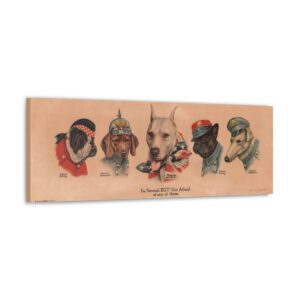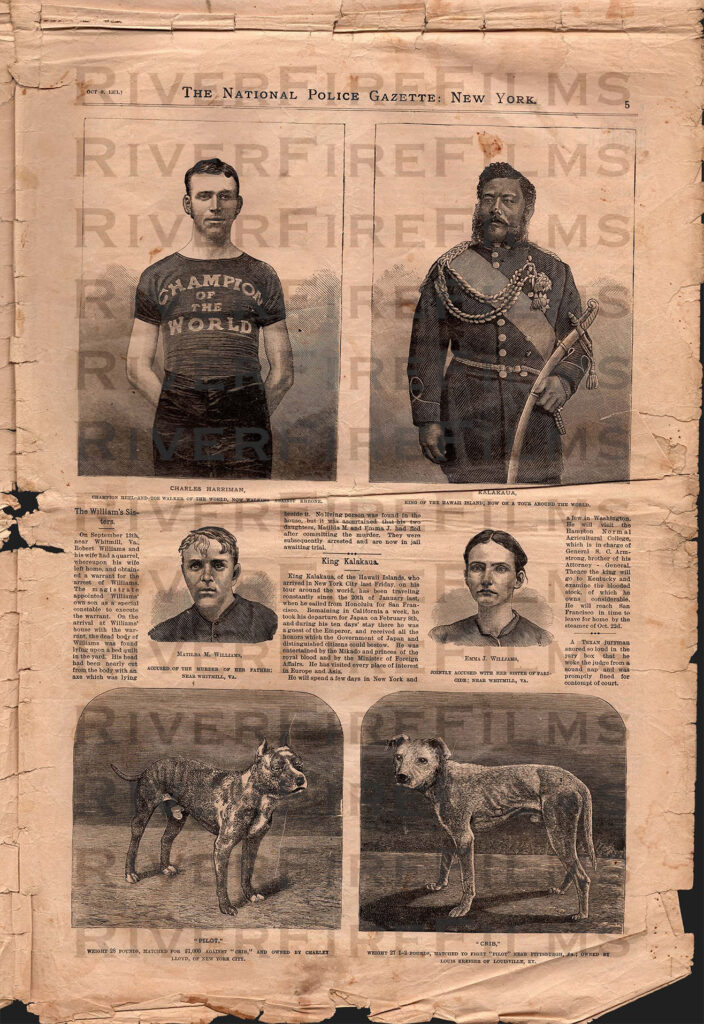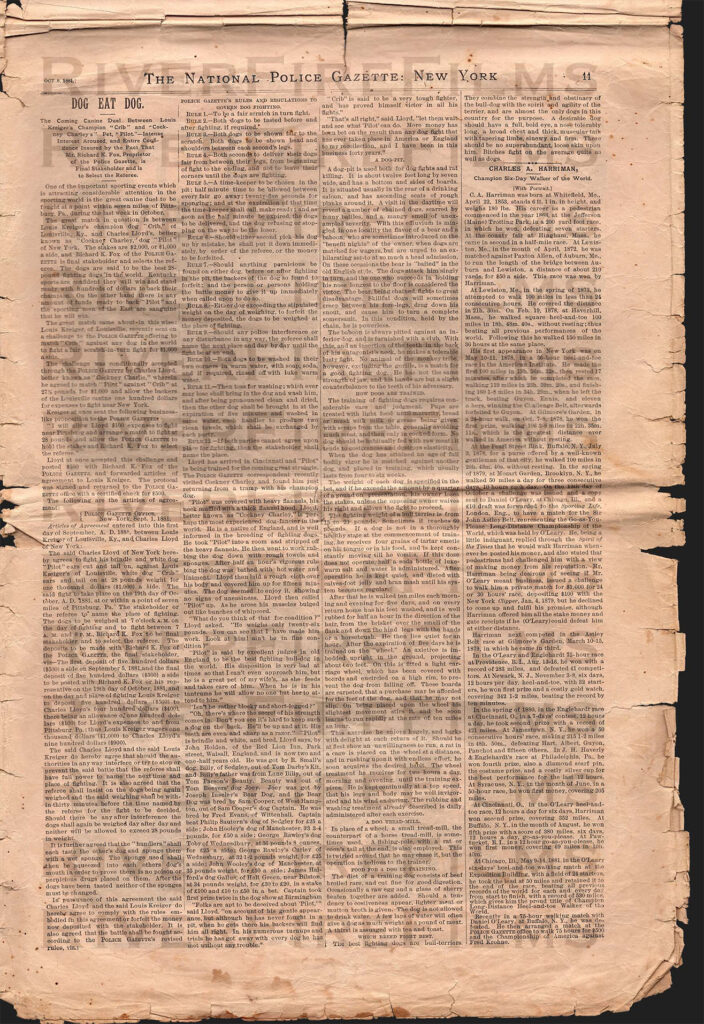Home » Films » Once In A Lifetime » The Archives » 1881 Lloyd’s Pilot | The Archives
A dog named Pilot, and the rise of the American Dogfighter
These historical artifacts tell a part of an important story. In the case of Archive #8, it shows how a match in 1881 between Lloyd’s Pilot and Krieger’s Crib for the (first) American Championship. This created a spike in interest of breeding pit bull terriers in the United States for the purpose of sport.
Despite the controversial and uncomfortable nature of this subject matter, items such as these pages from The National Police Gazette are necessary evidence to examine to better understand how it applies to dogfighting in our current times.
Pilot, and his owner - Charley Lloyd
Lloyd’s Pilot was a 28 lb. brindle and white bull-and-terrier bred by a man named John Holden of Walsall, England. After proving his worth as a fighting dog in England, he was then sold to a man named Charley Lloyd, also known as “Cockney Charley”.
Lloyd was an Englishman, who later settled in New York City and started importing several dogs from England beginning in 1854. Pilot was brought to the U.S. between 1878-1880, and said to be “the best fighting bulldog” in the world.
Crib, and his owner - Louis Krieger
Crib was a white 27.5 lb. champion fighting dog, owned by a man named Louis Krieger of Louisville, Kentucky.
On July 4, 1881, Louis wrote the Sporting Editor of the National Police Gazette, filing a challenge by offering to match Crib against any 28 lb. dog in the world for a wager of $1,000 a side. The challenge was published in the July 16, 1881 issue.
"Cockney" Charley accepts Krieger's challenge
Charley Lloyd accepted the challenge, agreeing to match Pilot for what would become claim to the first American Championship.
On September 1st, terms of the agreement were written out and published. The match would take place in Kentucky on October 19, 1881. Lloyd remarked, “More money has been bet on the result than any dog fight that has ever taken place in America or England to my recollection, and I have been in this business forty years.”
Dogfighting in America, post-Civil War
Dogfighting in the United States – post-Civil War, was not a new thing at all. Animal fighting, in general, goes back to the beginning of time. So, it wouldn’t be unheard of to make a statement claiming dogfighting in the United States likely took place shortly after the first settlers stepped on this land…centuries prior to this 1881 match between Pilot and Crib.
But, the reason this specific event was so significant is due to the widespread attention it garnered, nationally, as well as abroad, and the influence it created in its aftermath.
Pilot went on to defeat Crib, fatally wounding him after one hour and twenty-five minutes. This made his value as a stud dog increase, and his name can be found peppered in pedigrees of the foundational stock of some of the most well known breeders in the development of what would soon become the American Pit Bull Terrier.
Dogfighting goes underground with the forming of the ASPCA
Worthy of noting, anti-cruelty laws in the United States existed in the first half of the 1800s, but were limited. They mainly only offered protection to horse and cattle, so dogs used for this purpose weren’t seen as inhumane.
It wasn’t until Henry Bergh, founder of the American Society for the Prevention of Cruelty to Animals (ASPCA), formed his organization in 1866. He was granted authority in the New York Legislature to enforce these protections.
In an effort to expand Bergh’s abilities to enforce humane treatment of more animals, subsequent amendments were added to the law, including an act that made animal fighting illegal.
It’s been said that Mr. Bergh found the “sport” grotesque, and tirelessly pursued notables with ties to dogfighting and cockfighting, including Cockney Charley.
Once he was made aware of Pilot and Crib’s scheduled match, Bergh sent officers to shadow Lloyd’s whereabouts for weeks in Kentucky and Ohio.
Upon the conclusion of the fight, the Brooklyn New York Daily Union-Argus reported on October 29, 1881 that a Grand Jury indicted “Cockney” Charley Lloyd and Louis Krieger.
Lloyd immediately fled to Boston after the fight. On Christmas Even (1881) two months later, Lloyd issued a challenge via the Police Gazette promoting the opportunity to match against his now famous dog, Pilot.
About the Newspaper
The National Police Gazette was a weekly newspaper that originated in 1845, and began by chronicling crime and criminals.
Nearly thirty years later, it was sold to a man named Richard K. Fox, who turned it into a hugely successful men’s lifestyle tabloid. He ran the paper as Editor and Proprietor from 1877 until his death in 1922.
Under his guidance, the Police Gazette soared in popularity and was immensely influential. It was one of the first publications to tap into the curiosities of murder and mayhem, while also covering the country’s increasing interest in sports, especially professional boxing, for which it sanctioned matches for world champion title fights. He also published dogfights.
About "the Archives"
The Archives is a special blog series that looks at the complicated history of pit bull dogs through photographs, newspaper articles, and other historical items. This blog is part of the documentary film – Once In A Lifetime.
Purchase a piece of history to hang in your home or your office:
-

“I’m Neutral, But Not Afraid Of Any Of Them” | 36 x 12 Canvas
$64.00 Select options This product has multiple variants. The options may be chosen on the product page




